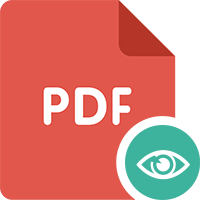Operational Efficiency and Service Management Practices of Dubai Islamic Bank: A Driving Force in the Modern Economic Landscape of the UAE
Published Online: October 09, 2025
Author Details
( * ) denotes Corresponding author
Dubai Islamic Bank plays a vibrant role in UAE’s financial sector and its international economy. Secondary data from top Dubai Islamic banks is used in this study to analyses their impact on economic stability, financial inclusion, and service management practices by examining the various products offered from the Dubai Islamic Bank. This study examines financial records, industry reports, and regulatory papers to the operational and business performance of Dubai Islamic banks during the financial year 2024. On the basis of findings, the paper proposes strategic recommendation to enhance the operational efficiency and service management practices of Dubai Islamic Bank.
Keywords
Islamic banking; Dubai Islamic Bank; Financial stability; Risk management; Customer perception; UAE
- Alharbi, A. (2015). Development of the Islamic banking system in Saudi Arabia. International Journal of Islamic and Middle Eastern Finance and Management, 8(2), 85–401.
- Ali, S. (2020). Islamic fintech and the future of financial inclusion. Journal of Islamic Banking and Finance, 37(1), 35–48.
- Al-Suwaidi, M. (2022). Comparative Shariah governance in GCC Islamic banks. Arab Journal of Islamic Finance, 10(2), 45–58.
- Dusuki, A. W. & Abdullah, N. I. (2007). Why do Malaysian customers patronize Islamic banks. International Journal of Bank Marketing, 25(3), 142–160.
- Hassan, K. & Lewis, M. (2009). Handbook of Islamic banking. Edward Elgar Publishing. Retrieved from https://doi.org/10.4337/97818472 05414
- Iqbal, Z. & Mirakhor, A. (2011). An introduction to Islamic finance: Theory and practice (2nd ed.). Wiley Finance. Retrieved from https://doi.org/10.1002/9781118390474
- Kayed, R. N. & Hassan, M. K. (2011). The global financial crisis and Islamic finance. Thunderbird International Business Review, 53(5), 551–564.
- Khan, H. & Habib, R. (2022). Economic substance vs. form in Islamic banking products. Journal of Islamic Financial Ethics, 5(1), 20–34.
Websites
- Dubai Islamic Bank (2023). Annual Financial Report 2024. Dubai Islamic Bank. Retrieved from https://www.dib.ae
- Abu Dhabi Islamic Bank (2023). Financial Performance Report 2024. Abu Dhabi Islamic Bank. Retrieved from https://www.adib.ae
- Central Bank of the UAE (2023). Islamic Banking Regulations & Market Overview Report. Central Bank of the UAE. Retrieved from https://www.centralbank.ae
- Islamic Financial Services Board (2024). Islamic Financial Stability Report. Islamic Financial Services Board. Retrieved from https://www.ifsb.org
- AAOIFI (2024). Shariah Governance Standards & Financial Reporting Guidelines. Accounting and Auditing Organization for Islamic Financial Institutions. Retrieved from https://www.aaoifi.com
- Dubai Islamic Economy Development Centre (DIEDC) (2023). Islamic Banking Market Trends Report. Retrieved from https://www.iedcdubai.ae
 Abstract Views: 5
Abstract Views: 5
 PDF Views: 6
PDF Views: 6

